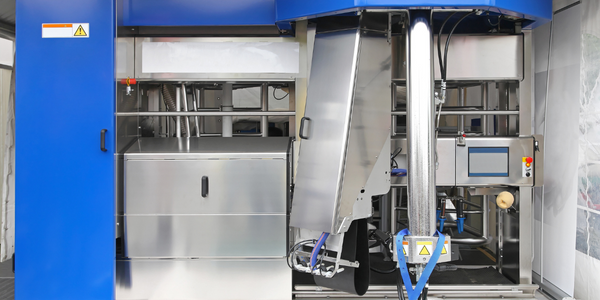Customer Company Size
Large Corporate
Region
- Europe
Country
- Germany
Product
- Camunda Platform
- Camunda Optimize
Tech Stack
- Java
- Microservices
- Cloud-based architecture
Implementation Scale
- Enterprise-wide Deployment
Impact Metrics
- Productivity Improvements
- Customer Satisfaction
Technology Category
- Platform as a Service (PaaS) - Application Development Platforms
- Platform as a Service (PaaS) - Data Management Platforms
Applicable Functions
- Business Operation
- Sales & Marketing
Use Cases
- Process Control & Optimization
- Predictive Quality Analytics
Services
- Cloud Planning, Design & Implementation Services
- Software Design & Engineering Services
About The Customer
R+V Versicherung AG is part of the cooperative financial services network and is one of the largest insurance companies in Germany. The company has around 17,000 employees and generates a revenue of around 20 billion EUR. In 2020, R+V Group grew its premiums written by more than 8%, significantly outperforming the sector in all categories. This success was largely due to a well-considered digital strategy, one cornerstone of which is the Camunda Platform.
The Challenge
R+V Versicherung AG, one of the largest insurance companies in Germany, was facing challenges with its old, monolithic software solution for business process management (BPM). The inflexible system required months of preparation for a release change, involving many manual tests and complete environment rebuilds. This process often resulted in system failures, negatively impacting the customer experience. Furthermore, updates were only carried out every few years, with smaller updates several times a year, limiting the company's agility and ability to respond to new requirements quickly.
The Solution
R+V Versicherung AG implemented the Camunda Platform to redesign its BPM architecture. This allowed the company to develop, update, and operate its process applications locally, increasing its agility and ability to respond to new requirements more quickly. The open architecture of the Camunda Platform enabled easy integration with various other architectures and frameworks, such as microservices and in-house developed applications. The platform also scales better than the previous BPM solution, allowing for better absorption of peak loads. Furthermore, the developer-friendly environment of the Camunda Platform made it easy for developers to become productive quickly, as it is easy to learn for anyone who knows common programming languages like Java.
Operational Impact
Quantitative Benefit

Case Study missing?
Start adding your own!
Register with your work email and create a new case study profile for your business.
Related Case Studies.

Case Study
System 800xA at Indian Cement Plants
Chettinad Cement recognized that further efficiencies could be achieved in its cement manufacturing process. It looked to investing in comprehensive operational and control technologies to manage and derive productivity and energy efficiency gains from the assets on Line 2, their second plant in India.

Case Study
Airbus Soars with Wearable Technology
Building an Airbus aircraft involves complex manufacturing processes consisting of thousands of moving parts. Speed and accuracy are critical to business and competitive advantage. Improvements in both would have high impact on Airbus’ bottom line. Airbus wanted to help operators reduce the complexity of assembling cabin seats and decrease the time required to complete this task.

Case Study
Improving Production Line Efficiency with Ethernet Micro RTU Controller
Moxa was asked to provide a connectivity solution for one of the world's leading cosmetics companies. This multinational corporation, with retail presence in 130 countries, 23 global braches, and over 66,000 employees, sought to improve the efficiency of their production process by migrating from manual monitoring to an automatic productivity monitoring system. The production line was being monitored by ABB Real-TPI, a factory information system that offers data collection and analysis to improve plant efficiency. Due to software limitations, the customer needed an OPC server and a corresponding I/O solution to collect data from additional sensor devices for the Real-TPI system. The goal is to enable the factory information system to more thoroughly collect data from every corner of the production line. This will improve its ability to measure Overall Equipment Effectiveness (OEE) and translate into increased production efficiencies. System Requirements • Instant status updates while still consuming minimal bandwidth to relieve strain on limited factory networks • Interoperable with ABB Real-TPI • Small form factor appropriate for deployment where space is scarce • Remote software management and configuration to simplify operations

Case Study
Developing Smart Tools for the Airbus Factory
Manufacturing and assembly of aircraft, which involves tens of thousands of steps that must be followed by the operators, and a single mistake in the process could cost hundreds of thousands of dollars to fix, makes the room for error very small.









